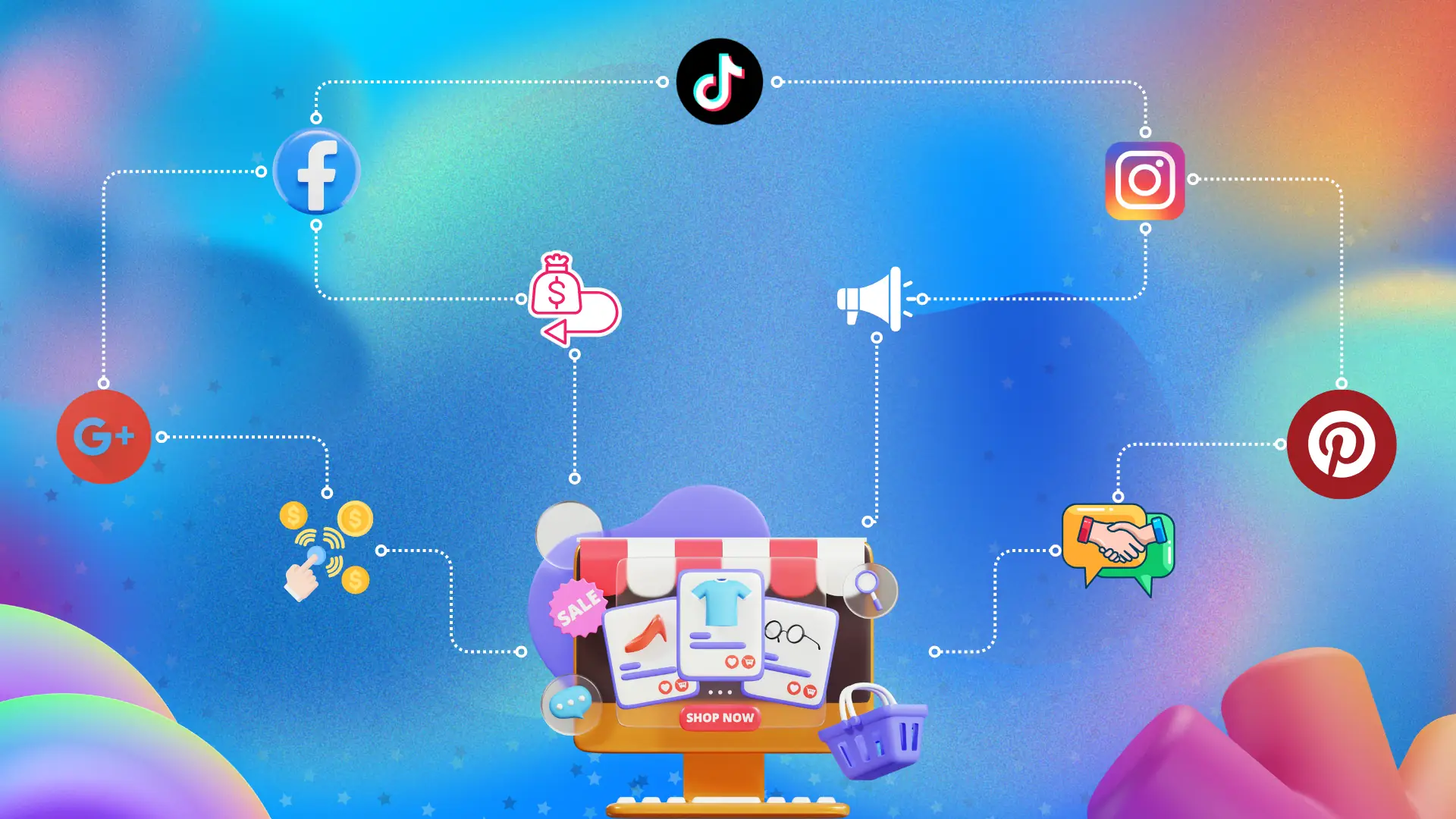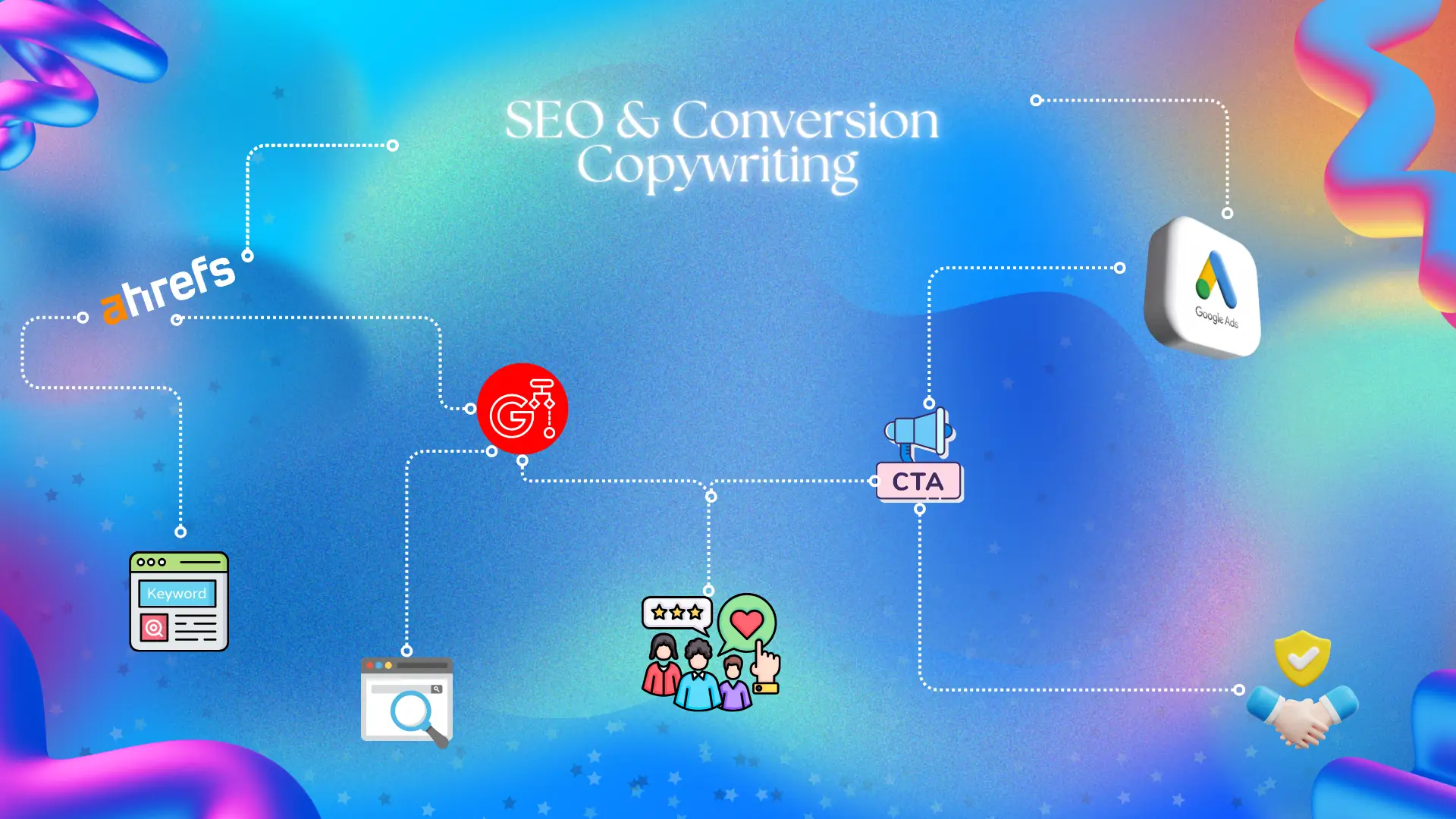3 Effective eCommerce Advertising Strategies

So, you’ve got your e-commerce business up and running. Your products? Stellar. Your website? Looking pretty slick. But now the big question looms: how do you get people to your site—and convince them to buy? You’re not alone if you’ve wondered why some ads seem to pull people in, while others barely make a dent.
Here’s the reality: online ads can be your secret weapon for standing out in a sea of scrolls and clicks. But throwing ads into the ether without a plan is like trying to win at darts blindfolded. You need a strategy—one that’s laser-focused on grabbing attention, building trust, and nudging shoppers right to checkout.
In this article, we’re diving into three proven strategies that take your e-commerce ads from “just there” to “there it is!” We’ll walk through the art of choosing the right ad channels (no, not every platform is a fit for every business), the magic of SEO & conversion copywriting to bring in organic traffic and boost conversions, and retargeting to bring back those visitors who were this close to buying.
Whether you’re looking to scale or just see better ROI, these strategies will give you the clarity—and confidence—to make e-commerce advertising work for you. Ready to dive in?

Choosing the Right Advertising Channels
Choosing the right advertising channel is critical: can be the difference between a sale and a scroll. Have you considered all available advertising channels? Google, Instagram, maybe even TikTok? Here’s a little secret: not all platforms are worth your energy (or your dollars).
You want your ads in front of people who are ready to buy—not just anyone who’ll click. Here we will analyse which advertising channels perform best for each different audience.
Let’s find where your ads can really shine.
Go Where Your Audience Hangs Out.
First rule of ads? Show up where your people are. Facebook is still prime real estate for adults 30+. But if you’re aiming for Gen Z or younger Millennials? Head straight to TikTok and Instagram, where they’re scrolling daily. No need to be everywhere. Pick the spots where your customers are already hanging out, and go all in.
Know the “Shopping Mindset” on Each Platform.
Think about this: someone on Google is actively searching—typing in exactly what they need. They’re ready to buy. On Facebook or Instagram? Not so much. Those platforms are for browsing and discovering. They’re open to ideas but not hunting for products. So don’t treat all platforms the same. Let each one play to its strengths. Your job? Match your ad message to the way people use each space.
Be Smart with Your Budget.
Ad costs can make or break you. Google Ads? Higher CPC (cost per click), especially if you’re in a competitive space. But hey, it’s also high-intent traffic. Facebook and Instagram tend to cost less per click, plus they offer budget-friendly ad formats. And TikTok? Still fairly affordable, and engagement’s through the roof. Track advertising costs and ROAS for each channel to make the most of every dollar.
Play to the Strengths of Each Platform.
Think of each platform as its own little ad universe. Google’s your “get found” machine, perfect for people searching with intent. Facebook? Use it when you want to dive deep into targeting—demographics, interests, you name it. Instagram is where you shine visually, perfect for product shots that pop. And Pinterest? Discovery heaven for niches like home decor or style. Let each platform do what it does best, and see how they bring in different types of buyers.
Test, Measure, Adjust.
Ad strategy isn’t a set-it-and-forget-it game. You’re going to test the waters. Experiment with platforms. Measure results. Look at what drives clicks, what converts, and—most importantly—what gives you the best ROAS (Return on Ad Spend). Maybe Facebook is your brand awareness champ, but Google Ads drive actual sales. Keep it flexible. Move your money where it’s working.
The right ad channel is a game-changer. Let your audience tell you where to be. And let the data guide your next move.
👉 For more targeted social media insights, check out our article on LinkedIn marketing strategies and simple hacks to help you build a platform-specific strategy.

SEO and Conversion Copywriting for Effective Advertising Strategies
Getting people to your site is only half the battle. Now they need a reason to stay—and click "buy."
This is where SEO and conversion copywriting team up. SEO draws them in. It’s all about keywords that get you found. But conversion copy? That’s the closer. It’s the difference between a “meh” scroll and a “yes, I need this!” click.
In this section, we’ll dive into how SEO and smart, compelling copy can transform traffic into buyers. Think magnetic headlines, persuasive product pages, and calls to action that actually move people. Get both right, and you’re not just bringing people to your site—you’re guiding them straight to checkout.
- Start with Keywords that Make Sense for Your Buyers
Don’t just throw keywords in and hope they stick. Find the ones that match what your buyers are actually searching for. Tools like Google Keyword Planner or Ahrefs can help you pinpoint words with strong search volume and buyer intent. Think specifics. Instead of “shoes,” aim for “comfortable running shoes” or “waterproof hiking boots.” When you focus on these buyer-specific keywords, you’re more likely to attract people ready to purchase, not just browse. - Make Your Product Pages Work Harder
SEO can bring users in, but your copy needs to seal the deal. Start with a killer headline—something clear and benefit-driven. Then, follow with short, scannable sentences that tell them exactly what they’re getting. Be specific. Instead of saying, “high quality,” say, “made from 100% organic cotton for all-day comfort.” Details make your product stand out from the noise and give potential buyers a reason to trust what you’re selling. - Optimize for People First (Then Search Engines)
It’s easy to get lost in SEO rules, but remember this: real people are reading your site. Make sure the copy flows, is easy to read, and feels natural. Avoid stuffing keywords in every line. Google’s algorithm is smart enough to pick up on over-optimization and will actually lower your ranking if it feels spammy. Instead, prioritize a conversational tone that’s easy to follow, and let keywords fit in where they naturally belong. - Add a Clear, Compelling Call to Action (CTA)
A call to action (CTA) is what turns a browser into a buyer. But here’s the catch: it can’t just say “Buy Now.” Try something more inviting, like “Find Your Perfect Fit” or “Upgrade Your Wardrobe.” It feels more personal and engaging, which makes the user feel like they’re making a smart choice rather than just getting sold to. Make sure the CTA stands out visually, too. Buttons in contrasting colors work well to draw the eye. - Use Social Proof to Build Trust
Conversion copywriting isn’t just about what you say; it’s about what others say, too. Think reviews, testimonials, and even user-generated photos or videos. Adding this social proof can improve trust by up to 70%, according to WiserNotify’s consumer review survey. When customers see positive reviews from people like them, they’re more likely to follow through with a purchase. - Keep the Flow Tight and Concise
Short, punchy sentences make your copy more readable and engaging. Online readers skim, so make it easy for them. Break down paragraphs. Use bullets. Add white space. This lets your message shine without overwhelming the reader. The goal? Keep them on the page long enough to want to learn more, not bounce because it’s a wall of text.
Get your SEO and copy working together, and watch how it turns visits into sales. Your words aren’t just filling space—they’re doing the heavy lifting of attracting, engaging, and converting customers.
👉 To learn more about the fundamentals of SEO, be sure to check out our article on the basic principles of SEO to enhance your online presence.

Advertising Retargeting for Enhanced Results
Ever had a potential customer visit your site, look around, and then… disappear? Retargeting is how you bring them back.
Most visitors don’t convert on the first visit. But with retargeting, you can remind them what they loved (and why they need it). It’s a second chance to keep your brand top-of-mind, turning casual browsers into buyers.
Here’s how to make retargeting work for you—without feeling pushy or invasive. We’ll dive into smart tactics that keep your ads relevant, your audience engaged, and your conversions climbing.
Segment Your Audience for Pinpoint Targeting
You’ve got a mix of people visiting your site. Some are curious window shoppers; others are serious about buying. Divide and conquer. Create specific retargeting lists: one for cart abandoners, another for those who just checked out your homepage. When you send each group an ad that speaks directly to their level of interest, you’ll make it feel personal. And that personal touch? It’s what brings them back.
Show Them Exactly What They Loved
Generic ads? Nope. Instead, use dynamic product ads to show people the actual items they viewed or left in their cart. Like a “you left this behind” nudge, these ads serve up the products they liked most—maybe with an extra shot of inspiration to remind them why they loved it. Facebook and Google make this easy with templates to help keep it relevant, personal, and far more clickable.
Match Your Ad Format to the Platform
Different platforms, different vibes. Facebook loves a good carousel for browsing multiple options. Instagram Stories? Quick video retargeting works wonders. And Google Display ads? They’re a simple visual reminder as users go about their day. Test a few approaches and ad formats, and let each platform play to its strengths. The more your ads “fit” the environment, the less they’ll feel like interruptions—and the more they’ll lead to conversions.
Keep It Chill (AKA Control Your Ad Frequency)
Let’s not make retargeting creepy. Hitting someone with the same ad over and over? It’s a fast track to “unsubscribe.” Instead, set a limit—aim for around 3-5 impressions per person per week. This keeps you on their radar without overwhelming them. Subtle visibility works better than feeling like a stalker.
Give Them a Little Extra Reason to Buy
Sometimes, an incentive does the trick: a small discount, free shipping, or limited-time offer can be the nudge they need. But keep it natural. Don’t hit them with desperate “Wait! Don’t go!” messages. A casual “thanks for checking us out” or “a little something on us” feels way more genuine. Little nudges, done right, can work magic.
Test and Tweak Like a Pro
Retargeting is all about learning what works. Keep an eye on the numbers—click-through rates, conversion rates, cost-per-click. If an ad starts to lag, try a fresh approach: maybe a single image instead of a carousel, or switch up the copy. Constant refinement is how you turn retargeting into a powerhouse tactic that brings people back.
With these tactics, you’re not just getting back in front of potential customers—you’re inviting them back in a way that feels relevant, helpful, and (most importantly) worth their time.
Wrapping It Up: Ready to Make Your E-commerce Advertising Work for You?
So, here you are. You’ve learned the ropes of e-commerce advertising—the kind that isn’t about throwing a bunch of generic ads into the void and hoping for the best. You’re building something smarter, something that gets the right people to lean in, and (yes) hit “buy.”
Think about it: your dream customer is out there right now, scrolling through the noise. They want what you’ve got, even if they don’t know it yet. Maybe they’ve peeked at your site before, a little curious. Maybe they almost checked out but didn’t take that final step. Retargeting, SEO, and the right ad channels? That’s your way of calling them back—without feeling like you’re shouting from across the room.
But here’s the thing: it’s not just about clicks. It’s about connection. Because in the end, what’s marketing without a spark of recognition? When your ad speaks to their needs and their style, it doesn’t feel like selling—it feels like a conversation they want to keep having.
So, ask yourself: what’s the next move? How are you going to bring that spark of curiosity into the light? And if one approach doesn’t work out, you’ll try another. That’s what makes this game both a challenge and a win when you get it right. Keep experimenting. Keep listening to your customers (the ones you want to come back). And keep tweaking until your ad game has them nodding, clicking, and buying.
Here’s to creating ads people don’t just see but feel.
🚀 Interested in improving your digital presence? Contact us to see how we can help your business grow online.
👉 Call us at +302610318598.


